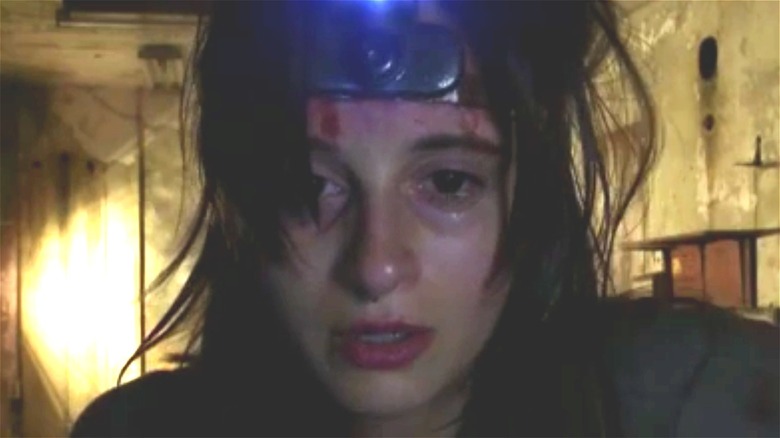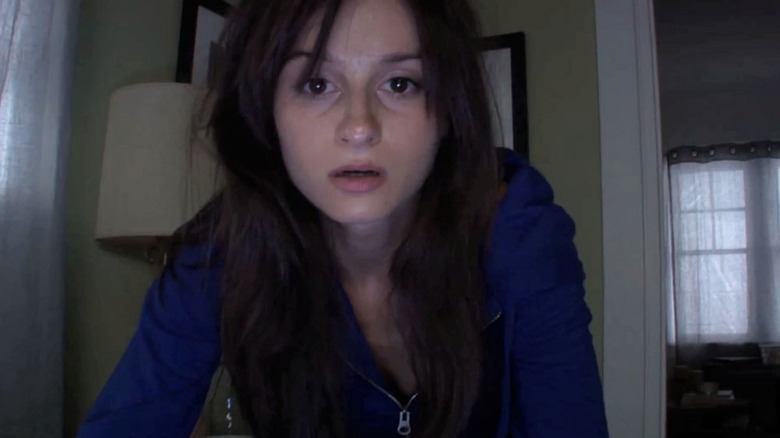Why You Should Watch The Den More Than Once
Some horror movies offer nothing after the initial scare. Once you know the twist or the second the killer is revealed, repeat viewings may bring no further pleasures to the table. Other movies, however, only get better with a rewatch. Some directors hide clues in plain sight that only make sense once you know the whole story.
"The Den" is one of several horror movies in recent memory that use digital technology to make a new brand of found-footage horror. It joins 2014's "Unfriended" and 2018's "Searching" in the webcam subgenre. Melanie Papalia stars as Elizabeth, a sociology grad student who starts using the Chatroulette-esque service "The Den" to conduct her Ph.D. project (via IMDb). While on the site, she seems to witness a murder. She takes her concerns to the police, who assure her the video is fake. But strange things begin to happen to her and her friends as she delves deeper into The Den.
The film uses its found-footage format to great effect. Everything you see is captured by laptop cameras, mobile phones, and GoPros. It's this visceral technique that makes "The Den" so rewatchable.
The Den hides clues in plain sight
One of the best horror tropes is what TV Tropes calls a "Meaningful Background Event." This is when important moments happen in the background, and you only catch them on a second or third viewing. For example, one scene in Alfred Hitchcock's "The Birds" shows crows amassing behind Tippi Hedren. Only after she turns to look at them do we even realize there are now hundreds surrounding her. The Netflix series "The Haunting of Hill House" went nuts with this trope, inserting ghosts into the background of every episode.
Many plot details are hidden as meaningful background events in "The Den," such as how the unseen killers get Elizabeth's friend, Damian (David Schlachtenhaufen), and how they retrieve evidence from her sister's house. The webcams are particularly useful for this effect, as they have a very wide depth of field that flattens any scene it captures. All webcam footage looks the same: kinda grainy, kinda cruddy. It's up to the viewer to sort through the noise of the image to find what's actually important. The horror is almost more chilling because you have to work at seeing it.

